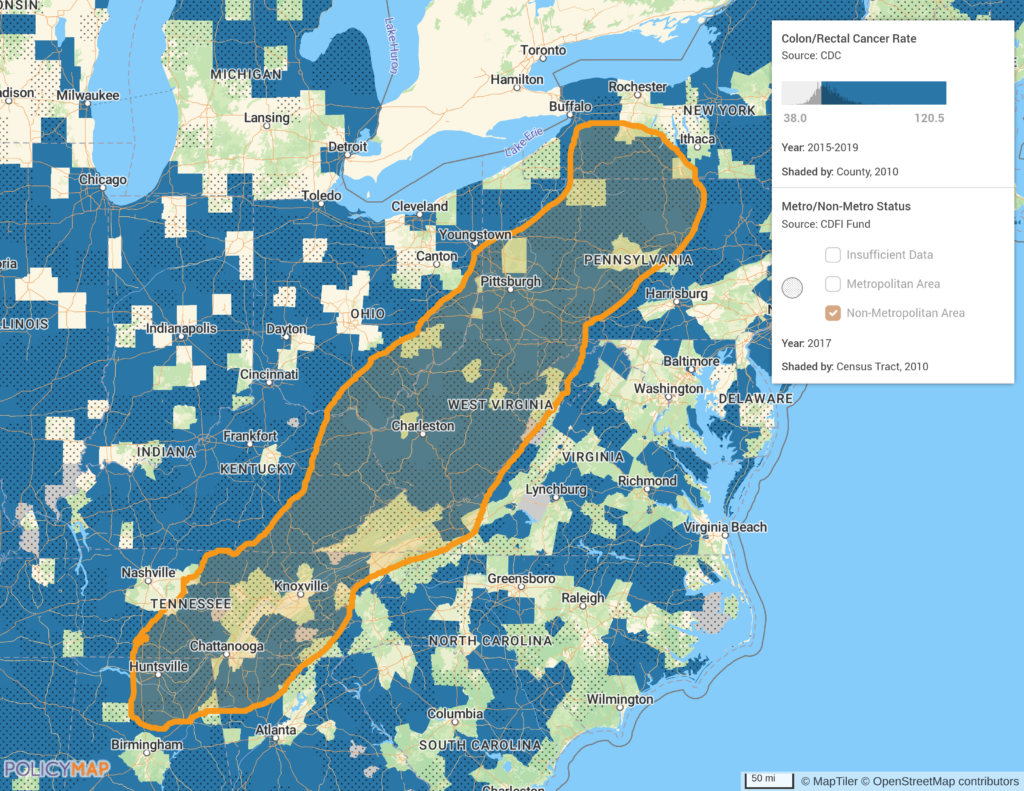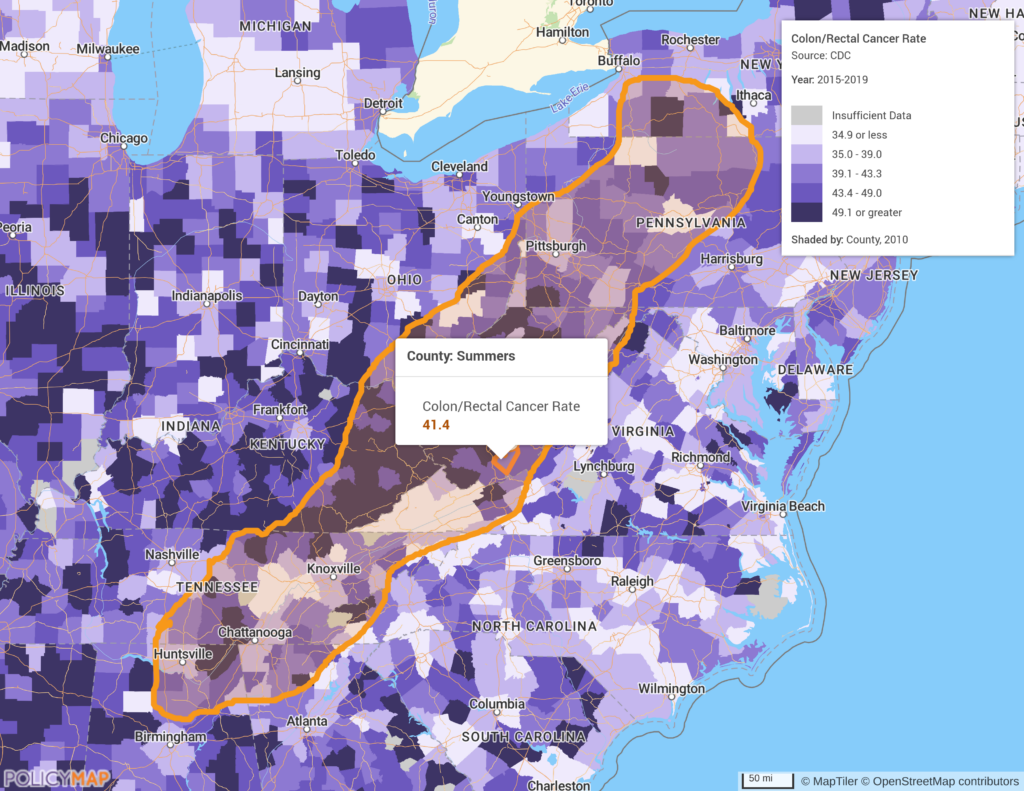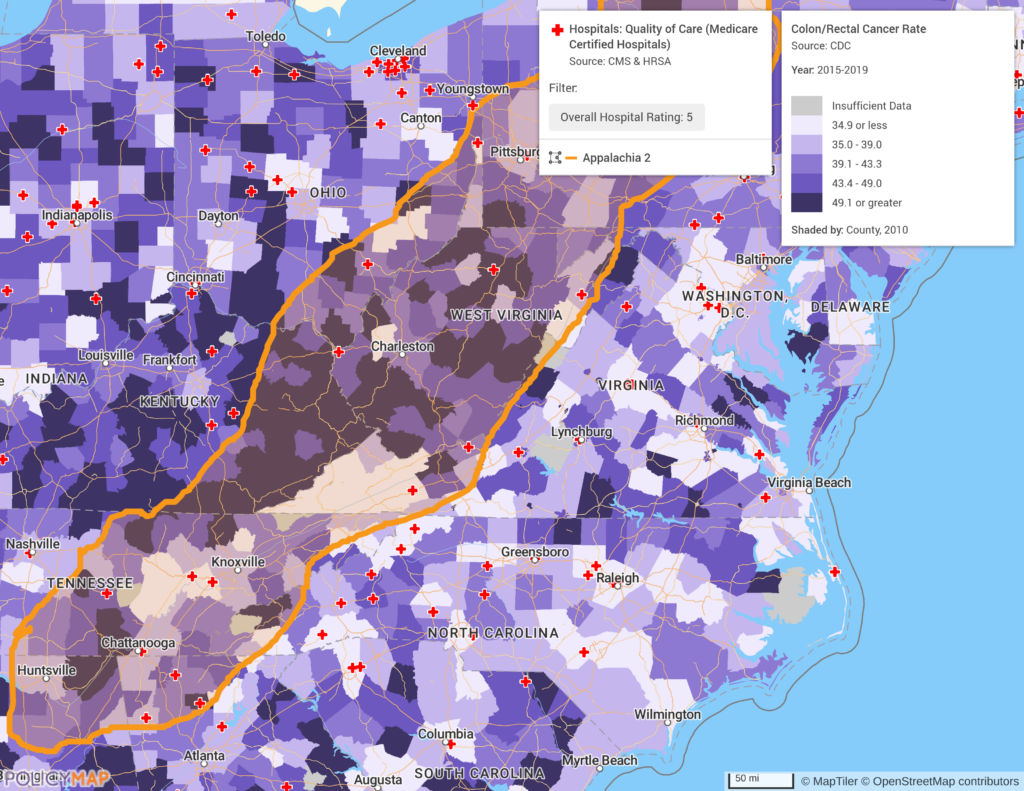Understand Cancer Health Disparities Using Cancer Incidence Data from the CDC

Disparities in Cancer Outcomes
Cancer is one of the leading causes of death in the U.S., following heart disease. Due to circumstances described as the social determinants of health (SDOH), however, some types of cancer can disproportionately affect certain groups. For example, breast cancer rates are relatively similar between white and Black populations but Black women are less likely to survive breast cancer than their white counterparts. To explore these kinds of cancer health disparities, PolicyMap offers the 2015-2019 CDC State Cancer Profiles data disaggregated by race and CDC Cancer Profiles data by cancer incidence type.
Cancer Disparities: Rural vs. Urban
In addition to cancer health disparities by race, SDOH-related cancer health disparities can be driven by where people live. For instance, according to the National Cancer Institute, colon and rectal cancers are higher in rural areas of Appalachia than in urban areas within the region. The map, below, shows a rough outline of Appalachia (orange border), rural areas (shown with hatch marks), and high rates of colon and rectal cancer (shown in blue). (High rates of colon and rectal cancer are, in this case, above the U.S. average of 38 per every 100,000 people in 2015-2019).

Examining the colon and rectal cancer data in Appalachia, the map illuminates rural Appalachian areas with very high colon/rectal cancer incidence rates of 60 – 80 people per every 100,000 people compared to the national average of 38 people per every 100,000 people.

Adding high-quality hospital locations to the map, the areas with some of the highest colon/rectal cancer rates lack access to high-quality healthcare facitilies that are required to treat cancer with such a challenging prognosis.

Cancer Incidence Data Availability
The newly updated CDC State Cancer Profiles data on PolicyMap provides users with powerful data to assess cancer rates at the county and state level by cancer type for breast, cervical, colon/rectal, lung/bronchitis, melanoma, and prostate. The data also supports a deeper understanding of disparities by race/ethnicity as these cancer types are available disaggregated by race for Black/African Americans, White, Hispanic, and Asian populations.
Find this data in the Health tab under Health Conditions > Cancer > Cancer Incidence and Health Conditions > Cancer > Cancer Incidence by Race/Ethnicity.
Request More Information
Understanding health disparities and their ongoing impact is a vital first step in working toward health equity. Interested in learning more about PolicyMap’s data on cancer, health risks, social derterminants of health (SDOH), or health outcomes? Fill in the form below to request information on data sources, pricing, and more.